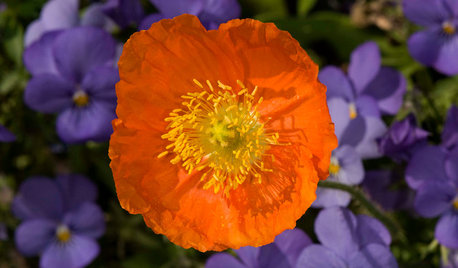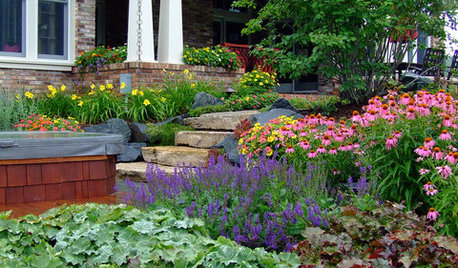Help! New sod overrun with annual bluegrass
jjonas
14 years ago
Related Stories

SAVING WATERHouzz Call: Are You Letting Go of Your Lawn?
Many facing a drought are swapping turf for less thirsty plantings. If you’re one of them, we’d like to hear about it
Full Story
LANDSCAPE DESIGN7 Low-Maintenance Lawn Alternatives
Turf isn't the only ground cover in town. Get a lush no-grass lawn with clover, moss and other easy-care plants
Full Story
GARDENING GUIDESNew Ways to Think About All That Mulch in the Garden
Before you go making a mountain out of a mulch hill, learn the facts about what your plants and soil really want
Full Story
FALL GARDENINGCalifornia Gardener's September Checklist
Planting opportunities abound this month: perennials, lawns, wildflowers and more. Our primer covers 'em all
Full Story
INSIDE HOUZZInside Houzz: New Data Offer Insights on Landscaping Trends
Homeowners are looking to manage water and add more enjoyment to their landscapes, according to a new Houzz survey
Full Story
GARDENING GUIDES6 Steps to Get a Garden Off to a Glowing Start
Grow a lush, balanced garden from an empty patch of yard or neglected landscape spot with these easy-to-follow guidelines
Full Story







formicburn
garycinchicago
Related Professionals
Ballenger Creek Landscape Architects & Landscape Designers · Zion Landscape Architects & Landscape Designers · Surprise Landscape Contractors · Bristol Landscape Contractors · Commack Landscape Contractors · Dallas Landscape Contractors · Kaysville Landscape Contractors · Lakeville Landscape Contractors · Oak Forest Landscape Contractors · Ramsey Landscape Contractors · Siloam Springs Landscape Contractors · Whitehall Landscape Contractors · Phoenix Swimming Pool Builders · San Antonio Swimming Pool Builders · Summerlin South Swimming Pool BuildersjjonasOriginal Author
bpgreen
jjonasOriginal Author
bpgreen
tiemco
garycinchicago
lou_spicewood_tx
tiemco
tomslildeere
garycinchicago
tiemco
garycinchicago
egghead2004
formicburn
garycinchicago